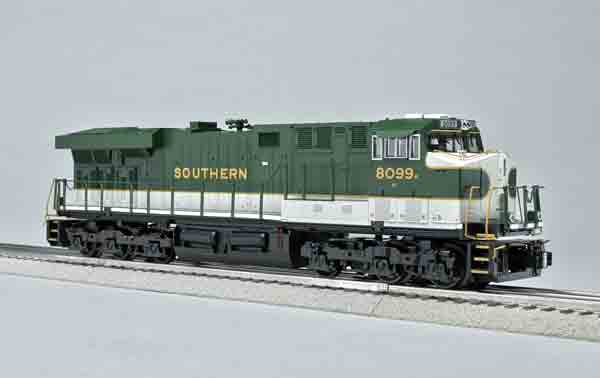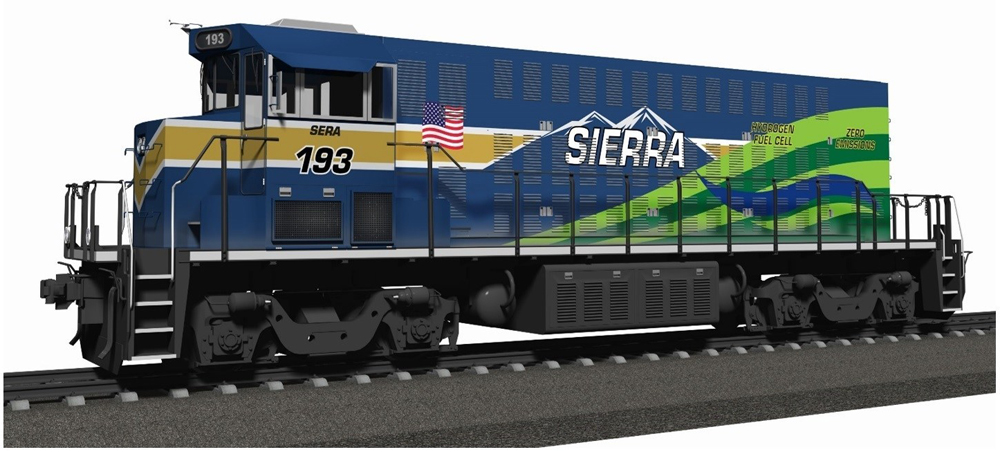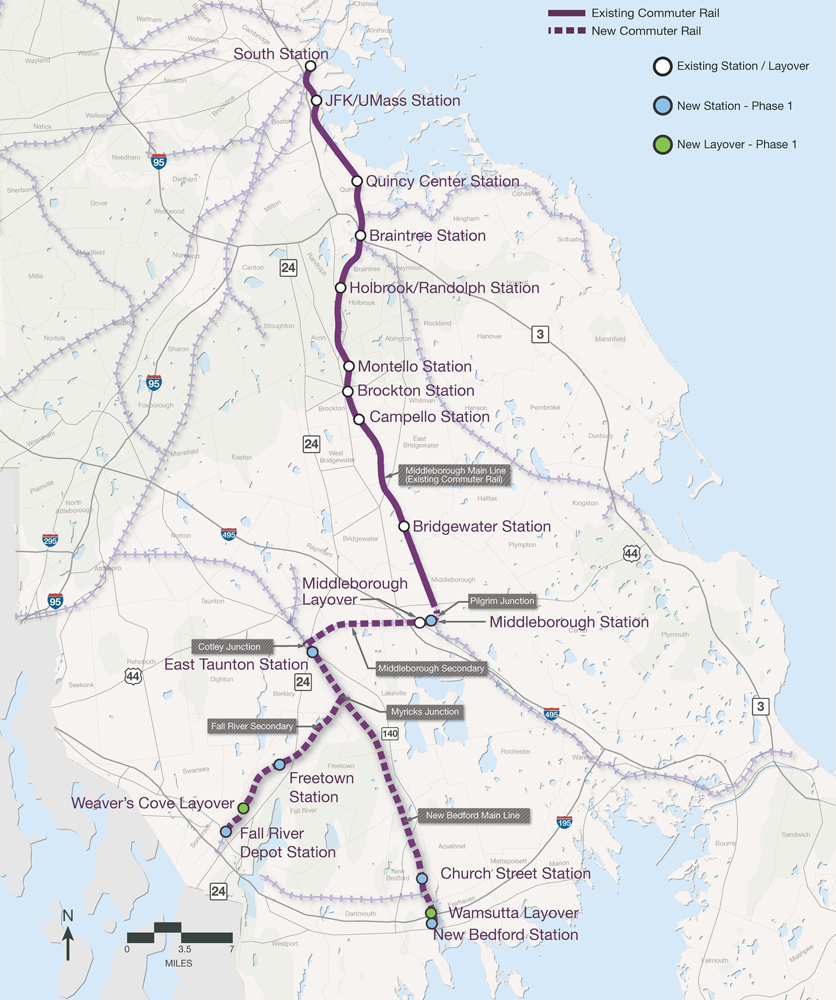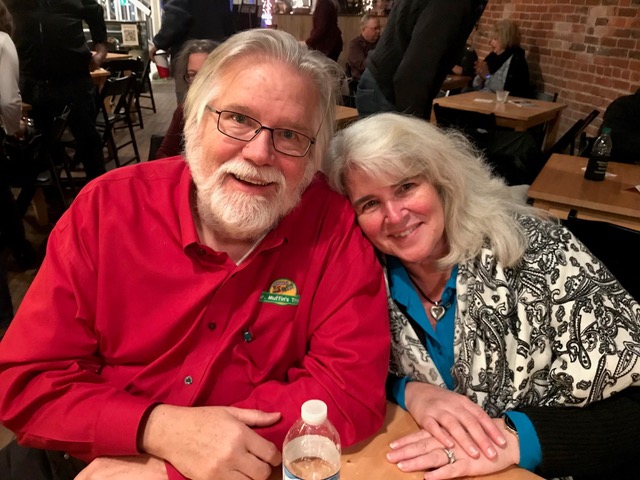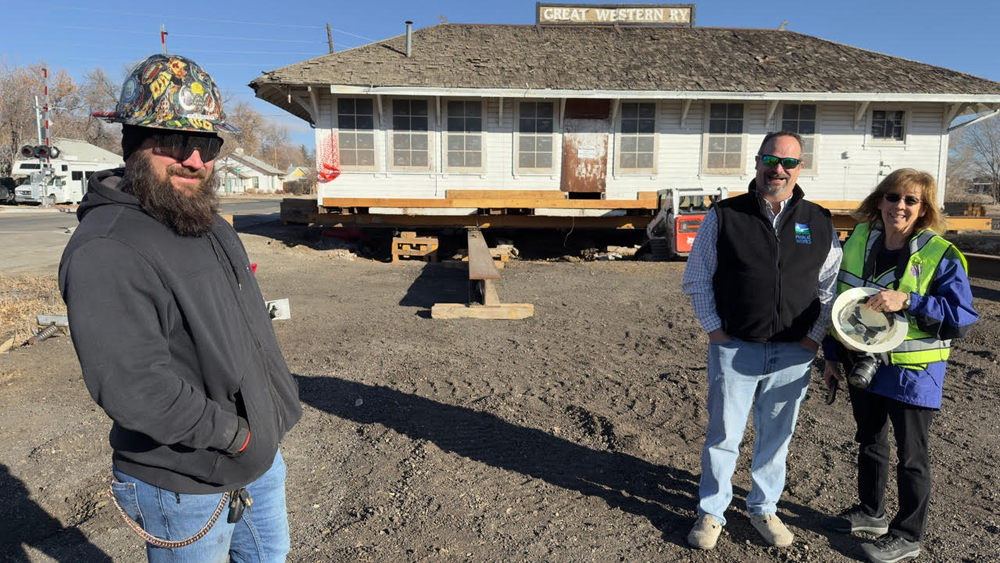Price: $329.95 (no. 30-20170-1
Features: Two can-style motors, smoke unit, coil couplers, ProtoSound 3.0 command and sound system
Current road names: BNSF, General Electric Evolution De-monstrator, Pennsylvania RR Heritage unit, Southern Ry. Heritage unit, Union Pacific
You may recall that the Norfolk Southern divvied up the Heritage paint schemes equally between General Electric (GE) ES44AC and Electro-Motive Division (EMD) SD70ACe diesels. The RailKing SD70ACe models arrived earlier in 2014, and the General Electrics rolled in during the late summer.
The ES44AC is a Hybrid Evolution series locomotive that set a standard for reliable, high-horsepower, high-fuel efficiency, and low-emission operation. The locomotive’s claim to fame is its ability to capture the energy dissipated during braking and store the power in batteries. The energy is then reused, reducing fuel consumption by as much as 15 percent and emissions by 50 percent as compared to most modern locomotives.
General Electric’s locomotive division has taken the lead in implementing new technology, and it seems determined to hold onto that lead in the world of 1:1 scale railroading.
Opening the box
The O gauge diesel measures 17 inches long and manages to pack in the key detail points. The pilot has cast-in and add-on brake and multiple-unit cables and a simulated uncoupler arm.
The add-on handrails are yellow and green, with a safety chain where the drawbridge would be. Ditch lights are positioned low on the deck.
The face of the safety cab has quite a bit of deep, cast-in detailing, including latches, grab irons, and a handle for the forward hatch. On top of the nose are six yellow add-on grab irons and two sand fill caps. Two more grab irons are placed over the windshields, and each forward window has two wiper arms.
There are two headlight lenses in the center, above the windows; illuminated number boards bracket the lamps.
When the locomotive was running, it struck me that the number board illumination was nearly as bright as the headlights and ditch lights.
The flanks of the model are an interesting collection of details. Right behind the cab on the fireman’s side (okay, firemen are long gone, so maybe I need to start calling this the brakeman’s side on diesels) is an elevated deck with handrail and louvered vents. On the opposite side, there is no elevated deck, and the vents are cast-in screens.
All the doors and hatches that mimic entry hatches have latch and seam detailing. The hinges caught my eye because they are very precise and very small (possibly scale-sized at that). On both sides, near the rear, are louvered vent sections that extend out from the body. These have latch and seam detailing, so presumably they could be opened up for maintenance. On the brakeman’s side is an add-on brake wheel.
The roof has cast-in rivet and lift ring detail plus add-on white housings for communication equipment. There is an add-on horn in the middle, and right behind the horn is the stack for the smoke unit. The screens on top of the radiator wings are separately applied see-through devices and they look very nice.
Looking square on at the rear of the ES44AC, it is dominated by the radiator overhang. It is pretty impressive.
The rear headlights are situated at the base of the radiator structure and have a silver face plate that reminds me, heaven knows why, of the eyes of the robot character WALL-E from the 2008 Pixar movie of the same name.
Below the lights, in a center column, is a recess where a sand fill cap is placed. Cast-in grab irons are on both sides of the center column. At the base of the shell are two cast-in hatches with hinges and latch detailing as well as what appears to be a bolted-on access hatch.
There are deck-mounted ditch lights, add-on handrails, and a safety chain. The detailing on the rear of the pilot mirrors the uncoupler arm and cabling on the front of the locomotive.
The die-cast metal truck sideframes are well done, and they capture the main detail points for the suspension and braking systems. The die-cast metal fuel tank (and sound speaker) has a simulated fuel-level sight gauge and red accents.
Each motor powers two axles; the third axle features flangeless wheels (allowing for tighter curves). Each truck has a single power pickup roller, and they are roughly 7½ inches apart.
Painting and decoration were remarkable. The classic Southern Ry. green-and-white scheme was skillfully executed. The white and green on most of the body were separated by a thin gold stripe. I had wondered how the gently rounded green on the nose of a Southern cab unit would look on what’s basically a square-snouted road switcher, and I have to say it looked darned good.
The gold lettering on the body and cab was clear and crisp, and the few bits of nomenclature on the body were clearly readable to my eyes.
On the test track
The grease I put on the gears didn’t even have a chance to get mooshed into the teeth a dozen times before this model was delivering superb low-speed performance.
Our command-mode low-speed average was 3.47 scale miles per hour, and the conventional-mode low-speed average was 3.57 scale miles per hour. Our high-speed average was 92.1 – easily fast enough to put on the point of your O gauge Southern Crescent and beat feet to New Orleans.
Drawbar pull for the GE diesel was a very respectable 2 pounds, 12 ounces.
Controls for sound and smoke output are contained beneath the lift-off radiator wings. The lid is held on with magnets.
Smoke unit operation was robust.
The audio package sounded great. The startup sounds were good, and I really enjoyed the diesel horn – it sounded like any train rolling through Waukesha. Reproduction of the clanks, hums, thrums, and ka-choofs was top notch.
The new RailKing ES44AC looks smart and runs well. For those clamoring for new tooling, this fills the bill. It is a well-executed model in some distinctive paint schemes, and it delivered pulling power aplenty. If you model modern-era gear, you may want to take a look at adding one of the O gauge ES44AC Heritage diesels to your fleet.





